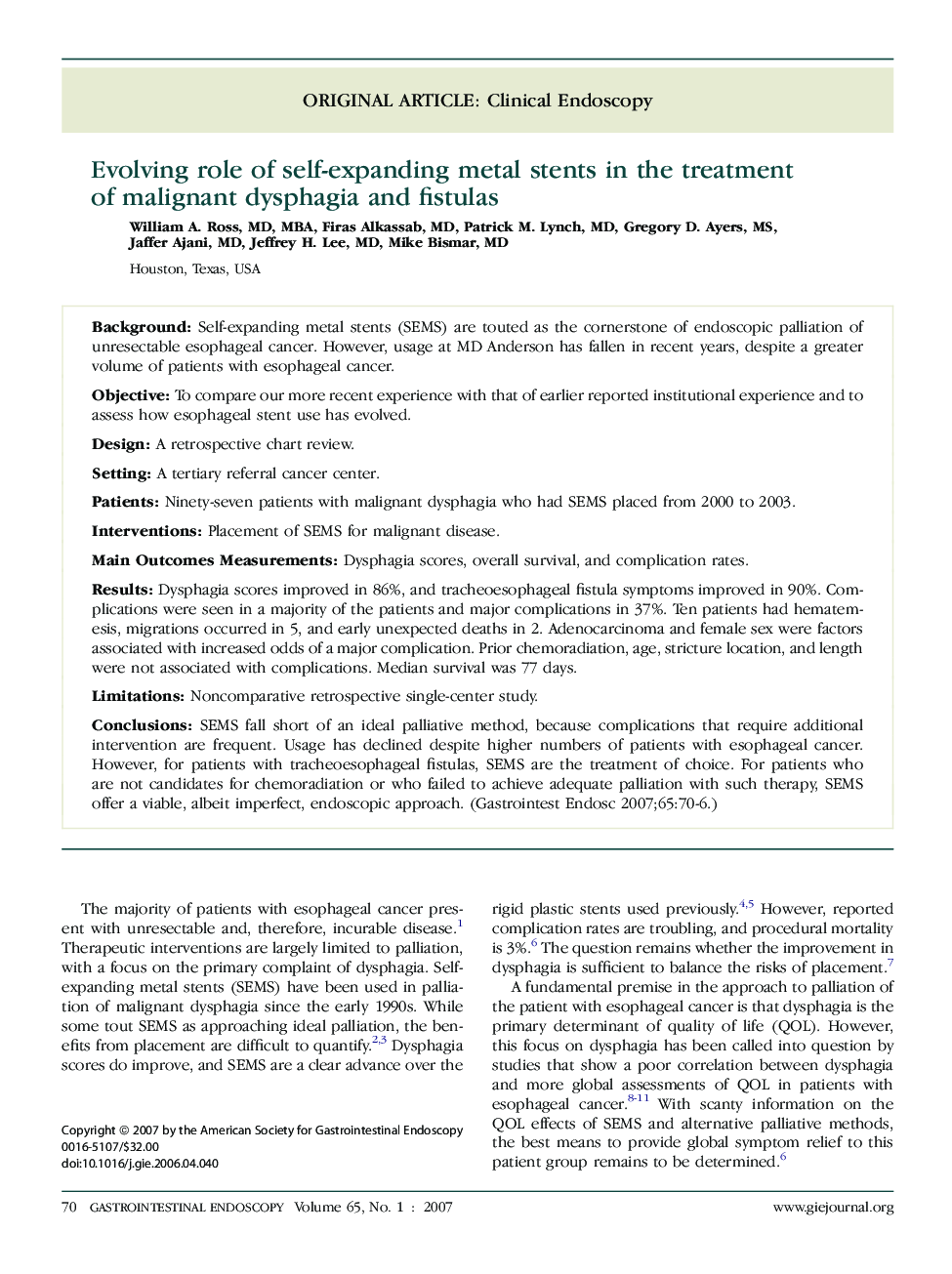| Article ID | Journal | Published Year | Pages | File Type |
|---|---|---|---|---|
| 3307778 | Gastrointestinal Endoscopy | 2007 | 7 Pages |
BackgroundSelf-expanding metal stents (SEMS) are touted as the cornerstone of endoscopic palliation of unresectable esophageal cancer. However, usage at MD Anderson has fallen in recent years, despite a greater volume of patients with esophageal cancer.ObjectiveTo compare our more recent experience with that of earlier reported institutional experience and to assess how esophageal stent use has evolved.DesignA retrospective chart review.SettingA tertiary referral cancer center.PatientsNinety-seven patients with malignant dysphagia who had SEMS placed from 2000 to 2003.InterventionsPlacement of SEMS for malignant disease.Main Outcomes MeasurementsDysphagia scores, overall survival, and complication rates.ResultsDysphagia scores improved in 86%, and tracheoesophageal fistula symptoms improved in 90%. Complications were seen in a majority of the patients and major complications in 37%. Ten patients had hematemesis, migrations occurred in 5, and early unexpected deaths in 2. Adenocarcinoma and female sex were factors associated with increased odds of a major complication. Prior chemoradiation, age, stricture location, and length were not associated with complications. Median survival was 77 days.LimitationsNoncomparative retrospective single-center study.ConclusionsSEMS fall short of an ideal palliative method, because complications that require additional intervention are frequent. Usage has declined despite higher numbers of patients with esophageal cancer. However, for patients with tracheoesophageal fistulas, SEMS are the treatment of choice. For patients who are not candidates for chemoradiation or who failed to achieve adequate palliation with such therapy, SEMS offer a viable, albeit imperfect, endoscopic approach.
